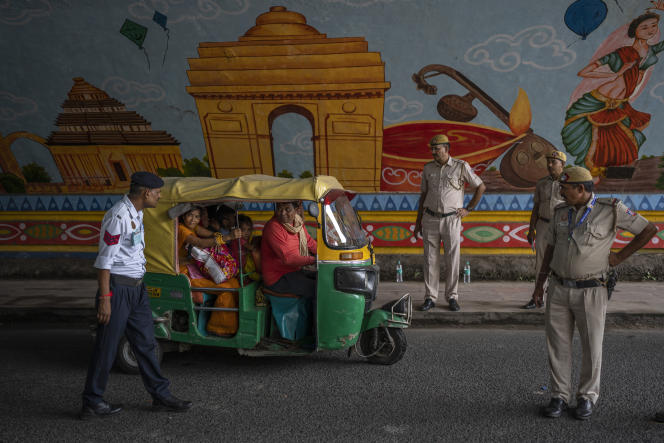The performance is worth as much as the symbol. On the occasion of 75 years of its independence, which occurred in 1947, India rose to the rank of fifth economy in the world, overtaking the United Kingdom, the former colonial power which ruled the subcontinent for two centuries and gleefully plundered its resources.
The most optimistic, with Prime Minister Narendra Modi in the lead, predict that India’s time has come. The most populous country on the planet, with its 1.4 billion inhabitants, its fantastic reservoir of labor and its young population, would be promised to supplant China, the former factory of the world which has become less attractive since the crisis due to Covid-19.
For now, the fifth world power, which is hosting the G20 heads of state on September 9 and 10, is still only a colossus with feet of clay, far removed from the level of development of other major economies. Narendra Modi recognized this himself, setting the horizon of 2047 to make India a developed country. The country is certainly showing an insolent growth of 7.2% (2022-2023) but this is not enough to absorb the approximately 10 to 12 million new entrants who arrive on the job market each year.
“India emerges as the world’s fastest-growing economy, but behind the billboards lie large-scale human tragedies”relieves Ashoka Mody in a forum in Project Syndicate. For the Princeton University economist and World Bank alumnus, “the inability to create jobs is linked to a struggling manufacturing sector which reflects the country’s difficulties in integrating into world trade”.
Informal economy
This is one of the characteristics of the Indian economy: the industrial and manufacturing sector, the main source of employment in all prosperous developing economies, remains totally atrophied in the country. Despite notable performances in services and in cutting-edge industries, such as the production of vaccines and medicines or digital technology, agriculture continues to be the largest source of jobs, often underpaid, a shock absorber for families in this largely informal economy. The share of workers is completely disproportionate to its contribution to wealth, since agriculture employs 44% of the active population but represents 15% of gross domestic product (GDP).
Among all G20 countries, India has the lowest per capita income ($2,085, or 1,947 euros), has the largest number of poor people living on food rations (800 million people), and ranks 107e out of 123 countries in the Global Hunger Index. GDP per capita is five times lower than in China, eighteen times lower than in the United Kingdom. “Even the per capita calculation is not sufficient because it does not take into account inequalities”, says Reetika Khera, development economist, professor at the Indian Institute of Technology in New Delhi.
You have 56.49% of this article left to read. The rest is reserved for subscribers.
